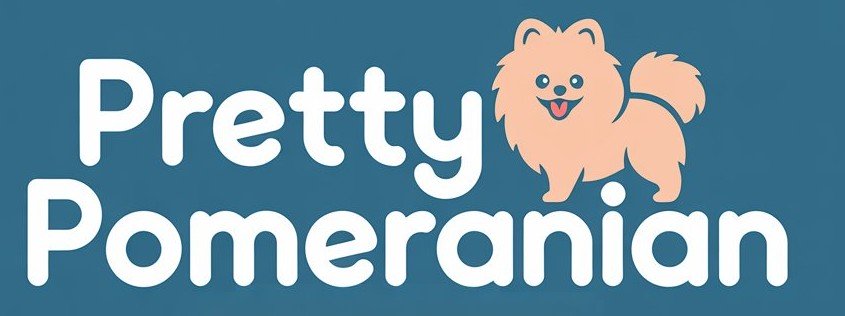Staring at endless rows of dog food labels while your fluffy Pomeranian gives you those expectant eyes can feel like deciphering a foreign language – trust me, I’ve been there more times than I care to count with my own little dynamo, Sash.
Here are three essential nutrition facts every Pomeranian owner needs to master:
- Puppies need 25-30% protein and smaller, frequent meals to fuel their rapid growth
- Adults thrive on high-quality protein sources with controlled portions to prevent obesity
- Senior Poms require easily digestible foods with joint-supporting nutrients and reduced calories
Puppy Power: Fueling Your Fluffball’s Growth
When Sash was a puppy, I learned the hard way that those tiny stomachs pack serious nutritional demands. Puppies under twelve months need a diet containing 25-30% protein and 8-15% fat, according to the Association of American Feed Control Officials (AAFCO). Their rapid growth phase demands premium fuel – think of it as high-octane gas for a Ferrari engine.
The challenge with Pomeranian puppies lies in their microscopic stomachs paired with sky-high energy needs. I discovered that feeding Sash four small meals daily worked infinitely better than the traditional twice-daily schedule. Dr. Sarah Mitchell, a veterinary nutritionist I consulted, explained that frequent smaller meals prevent hypoglycemia – a dangerous condition where blood sugar plummets in toy breeds.
Small kibble size matters enormously. Those adorable little jaws weren’t designed to tackle Great Dane-sized chunks. Look for puppy formulas specifically designed for small breeds, with kibble pieces no larger than your pinky nail.
Adult Excellence: Maintaining Prime Condition
Adult Pomeranians (ages 1-7) present their own unique dietary puzzle. These compact comedians are notorious for their “I’m starving to death” performances, complete with dramatic sighs and pitiful stares. Don’t fall for it – I did, and Sash quickly resembled a furry basketball more than a graceful spitz.
The ideal adult Pomeranian diet contains 18-25% protein from high-quality sources like deboned chicken, salmon, or lamb. Avoid generic “meat meal” – you want to know exactly what protein your precious pup is consuming. The American Kennel Club recommends calculating portions based on your dog’s ideal weight, not their current weight if they’ve packed on extra pounds.
Here’s a reality check: most adult Pomeranians need only 1/4 to 1/2 cup of high-quality dry food daily, split between two meals. That sounds ridiculously small until you realize their entire body weighs less than a gallon of milk. Portion control becomes absolutely critical because even an extra tablespoon daily can lead to significant weight gain over time.
Treats and Training Balance
Training treats shouldn’t exceed 10% of daily caloric intake. I learned this lesson when Sash’s enthusiastic learning sessions turned him into a chunky scholar. Opt for single-ingredient treats like freeze-dried liver or break regular treats into tiny pieces. Your Pom won’t notice the size difference – they’re motivated by frequency, not quantity.
Senior Wisdom: Adapting for Golden Years
Senior Pomeranians (7+ years) face unique nutritional challenges that require thoughtful adjustments. Sash started showing signs of slower digestion and decreased activity around age eight, prompting me to reassess his dietary needs completely.
Senior dogs benefit from easily digestible proteins and added nutrients supporting joint health. Look for foods containing glucosamine and chondroitin sulfate – these compounds help maintain cartilage health in aging joints. Many senior formulas also include omega-3 fatty acids, which support cognitive function and reduce inflammation.
Caloric needs typically decrease by 10-20% in senior dogs due to reduced activity levels. However, protein requirements might actually increase slightly to help maintain muscle mass. This delicate balance requires close monitoring and potentially more frequent veterinary check-ups to ensure optimal body condition.
Special Considerations for Pomeranian Nutrition
Pomeranians face breed-specific challenges that influence dietary choices. Their luxurious double coats require adequate omega fatty acids for shine and health. Dental issues plague many small breeds, making wet food or softened kibble necessary for some individuals.
Luxating patella, a common Pomeranian condition where kneecaps dislocate, benefits from maintaining optimal body weight. Every extra ounce puts additional stress on those delicate joints. Tracheal collapse, another breed concern, can be aggravated by obesity, making portion control literally a matter of comfortable breathing.
Reading Labels Like a Pro
The first five ingredients tell the real story of any dog food. Meat should appear first, followed by wholesome ingredients you recognize. Avoid foods listing corn, wheat, or soy as primary ingredients – these provide calories but limited nutritional value for our demanding little athletes.
Preservatives matter too. Natural preservatives like mixed tocopherols (vitamin E) and ascorbic acid (vitamin C) are preferable to chemical preservatives like BHA, BHT, or ethoxyquin.
Hydration and Feeding Schedule
Fresh water availability remains non-negotiable regardless of age. Pomeranians can be surprisingly picky about water temperature and cleanliness – Sash refuses anything that isn’t fresh daily and at room temperature. Elevated food and water bowls can help reduce neck strain, particularly beneficial for seniors.
Consistency in feeding times helps regulate digestion and prevents begging behaviors. I feed Sash at exactly 7 AM and 5 PM daily – he’s developed an internal clock more accurate than my smartphone.
When to Consult Your Veterinarian
Any dietary changes should involve your veterinarian, particularly if your Pomeranian has existing health conditions. Some dogs require prescription diets for kidney disease, heart conditions, or food allergies. Never assume that expensive automatically means better – your vet can recommend appropriate options within your budget.
Regular body condition assessments help determine if your feeding strategy is working. You should feel your Pom’s ribs easily with gentle pressure but not see them prominently. A visible waist when viewed from above indicates proper weight maintenance.
Finding the perfect diet for your Pomeranian isn’t about discovering one magical formula – it’s about understanding your individual dog’s needs at each life stage and adapting accordingly. Sash has taught me that patience, observation, and willingness to adjust create the foundation for lifelong health and happiness. Your fluffy companion’s bright eyes and boundless energy will thank you for the effort you invest in their nutritional foundation.




